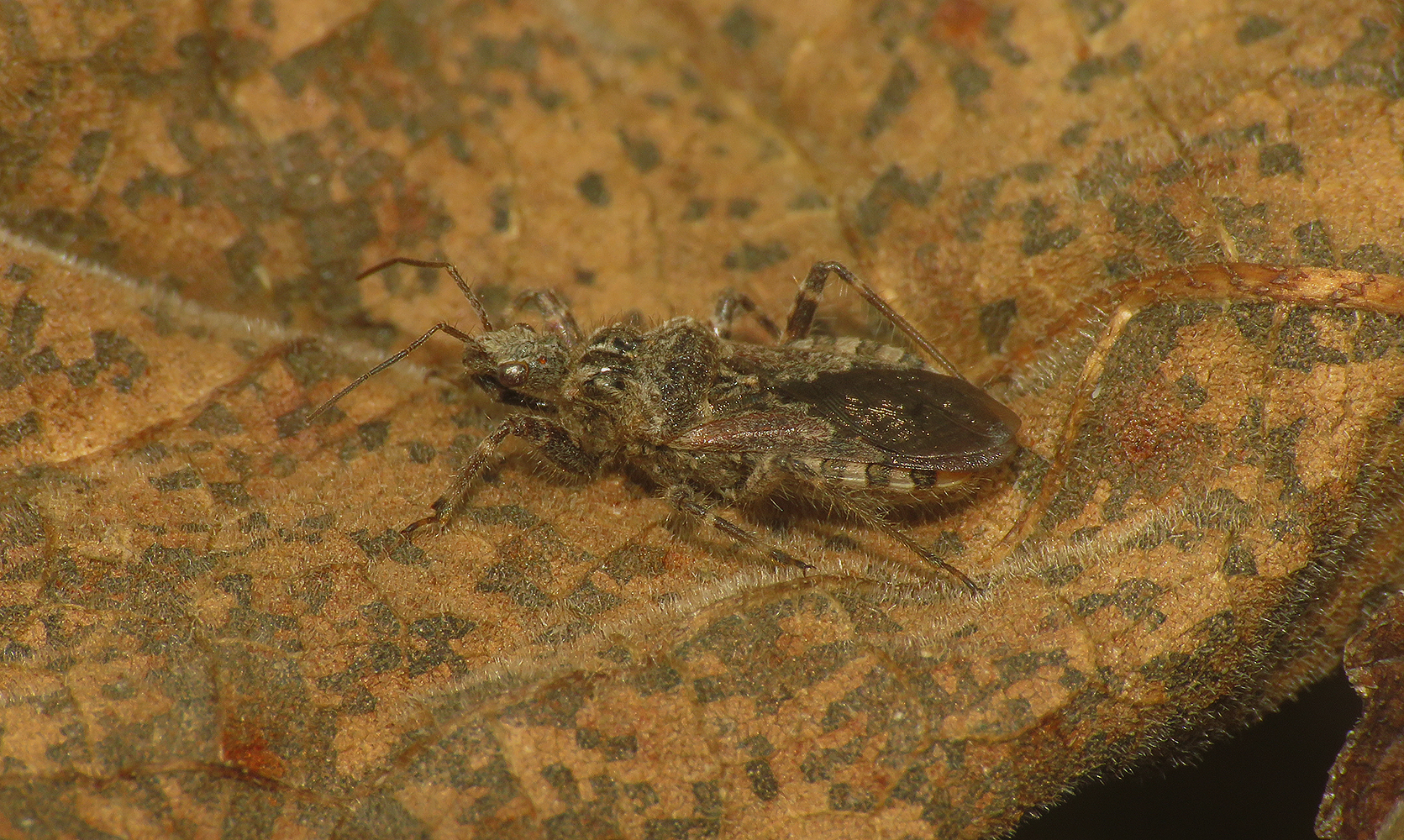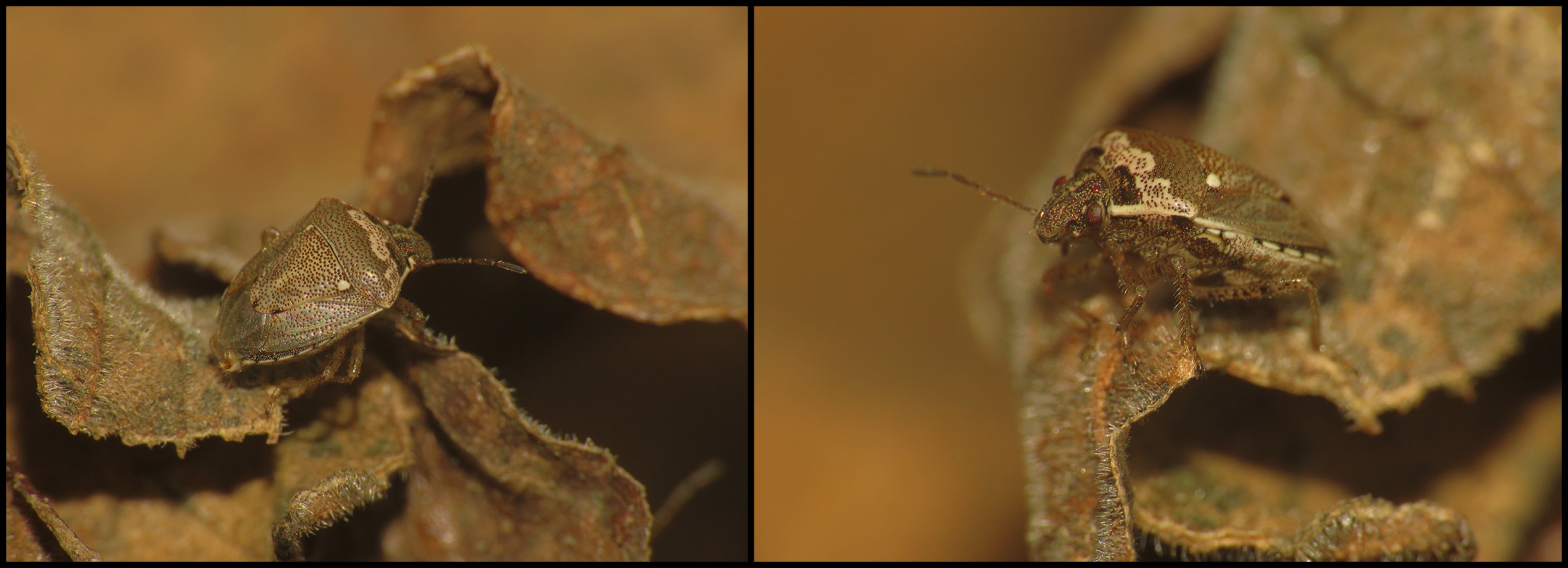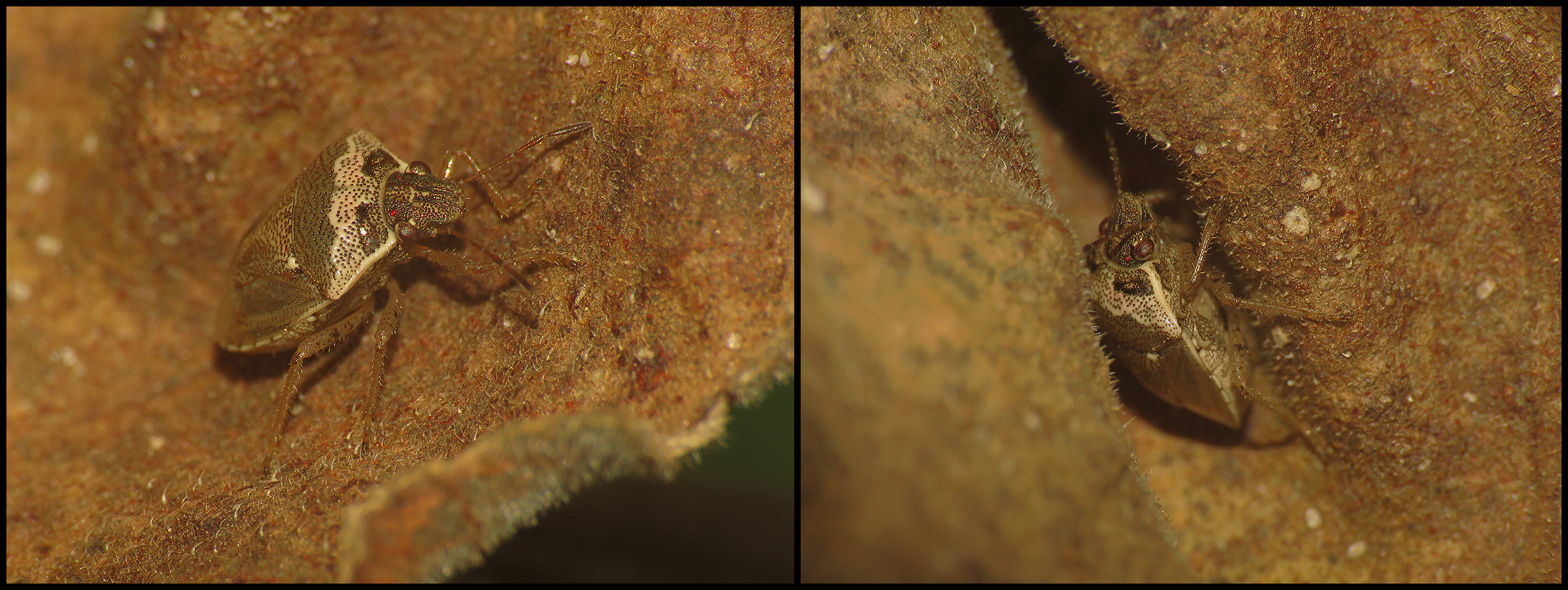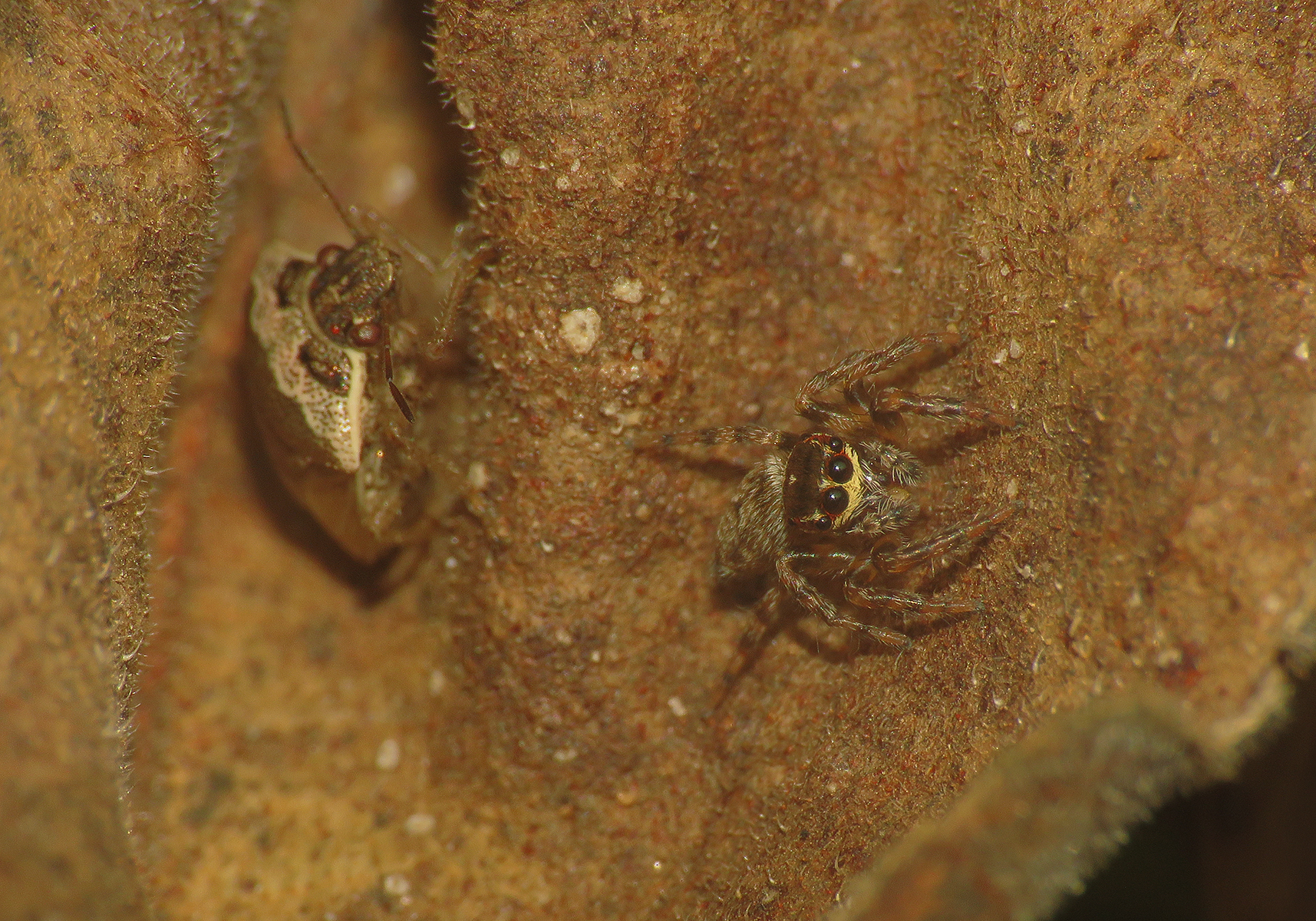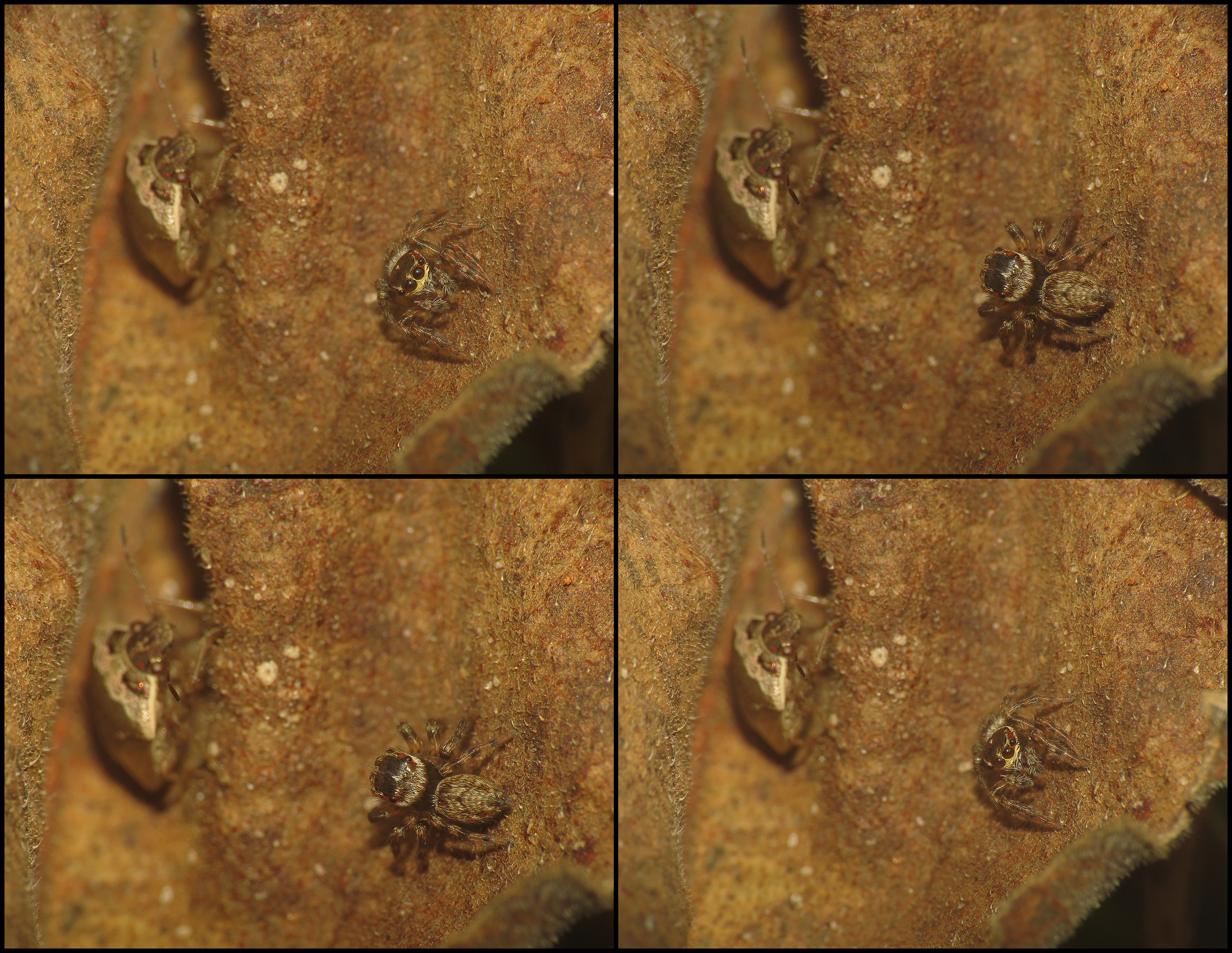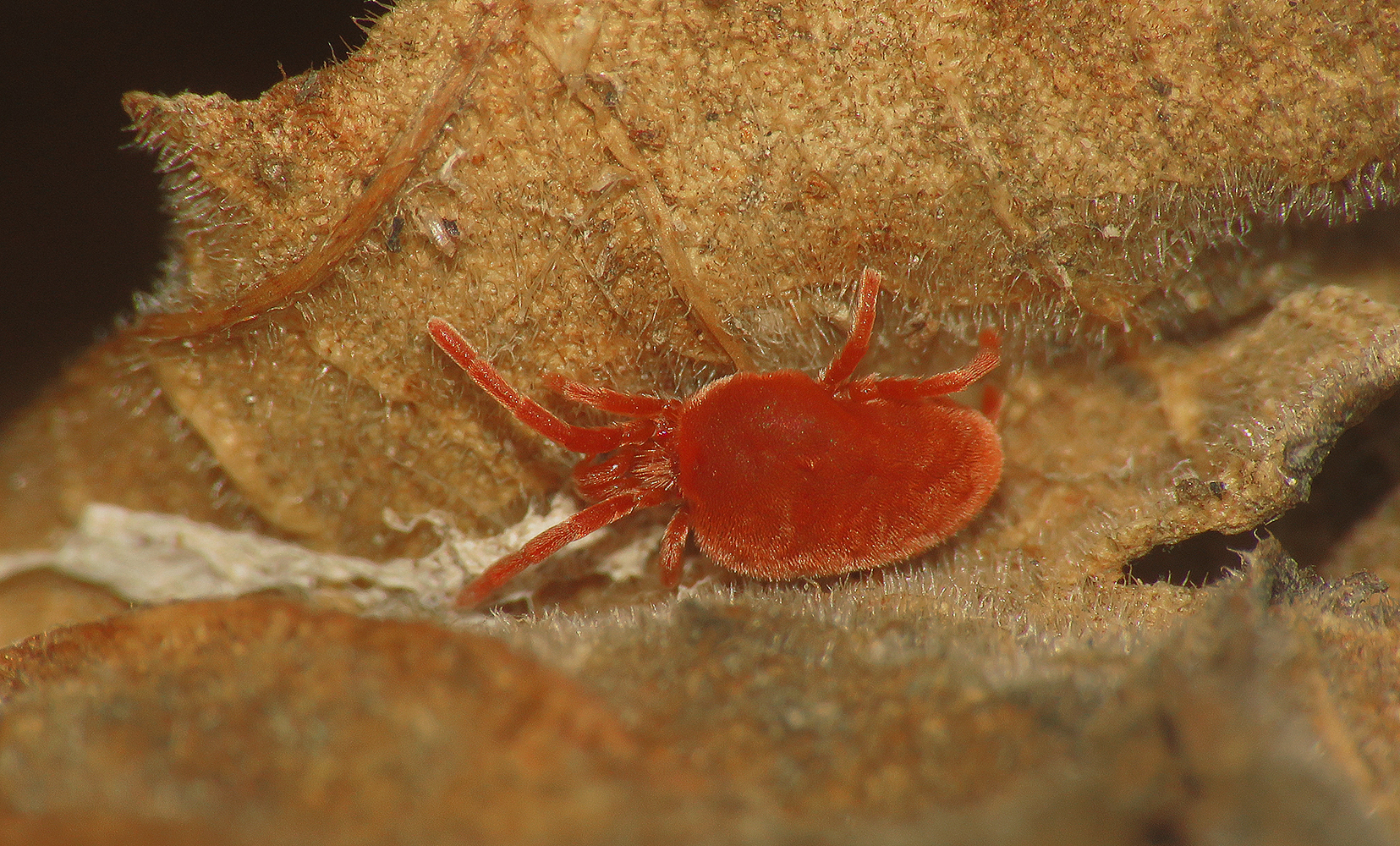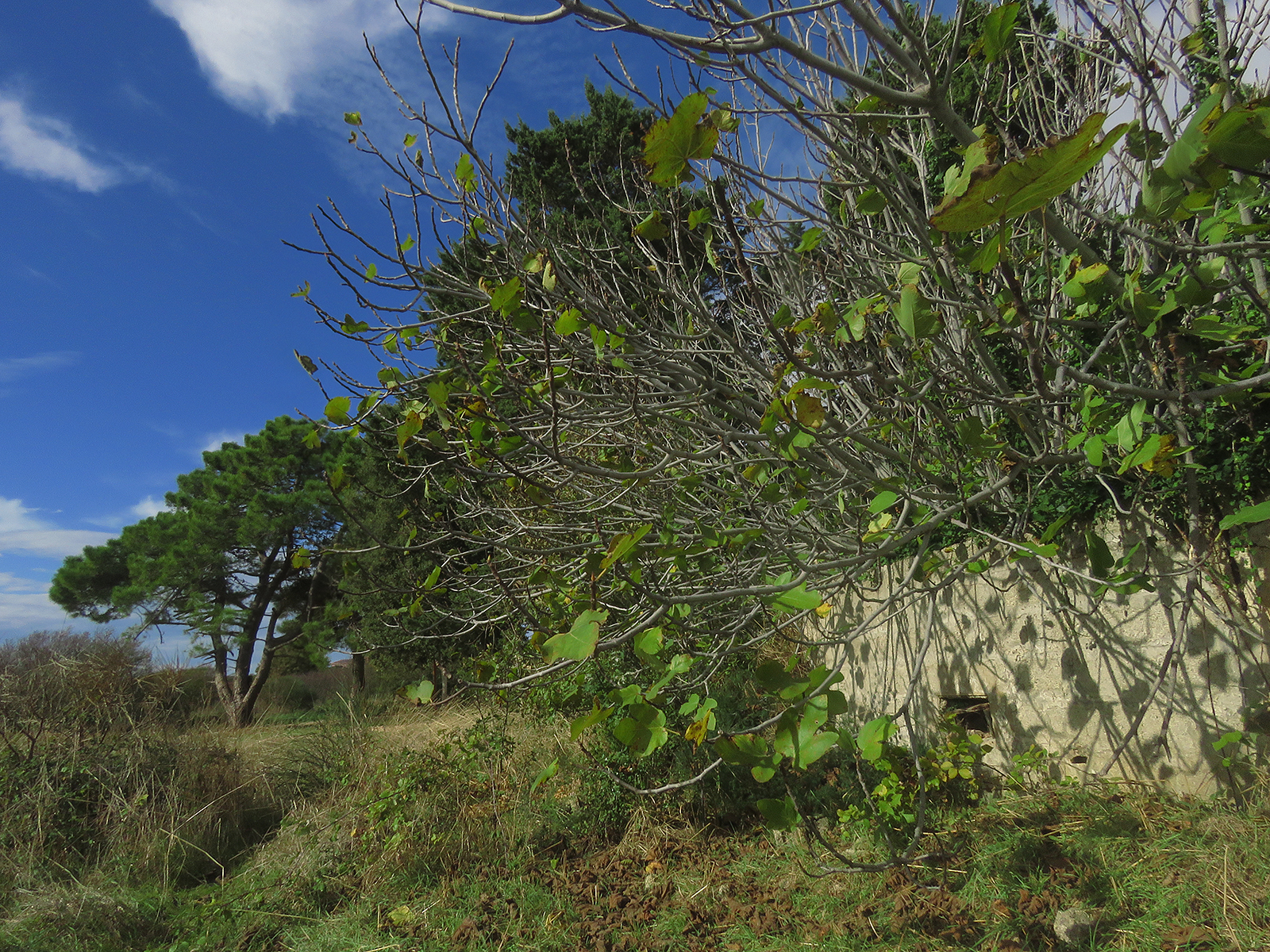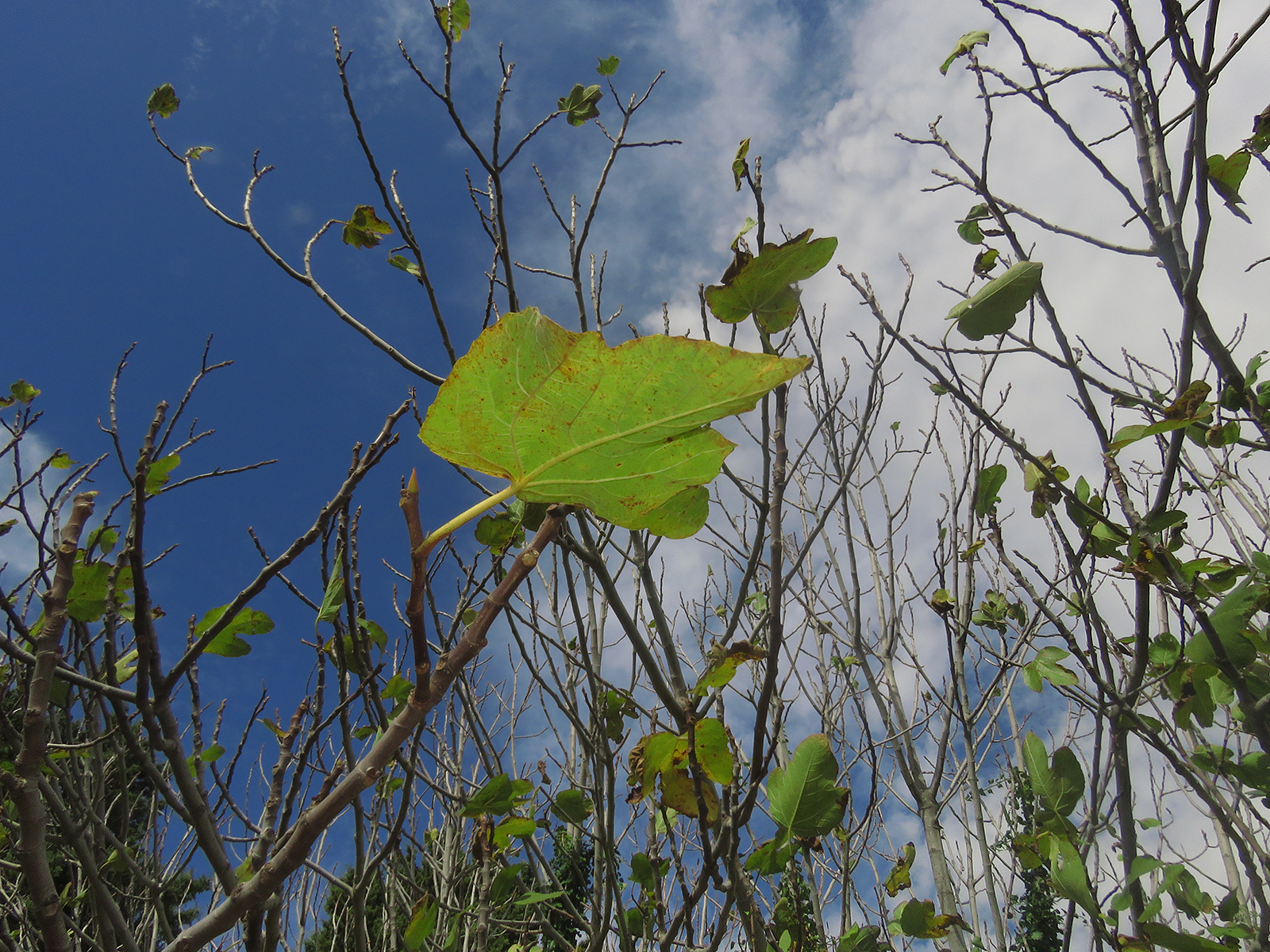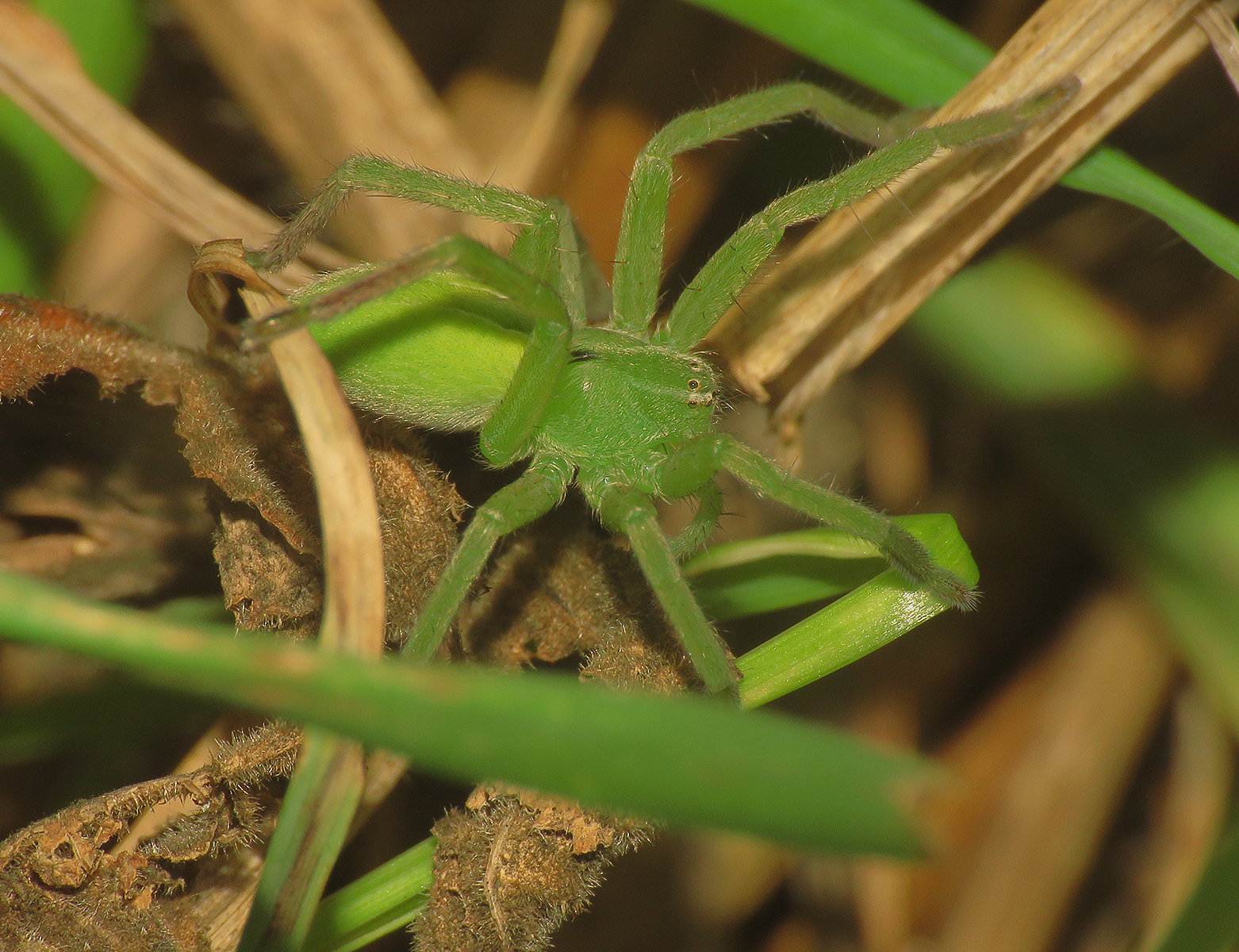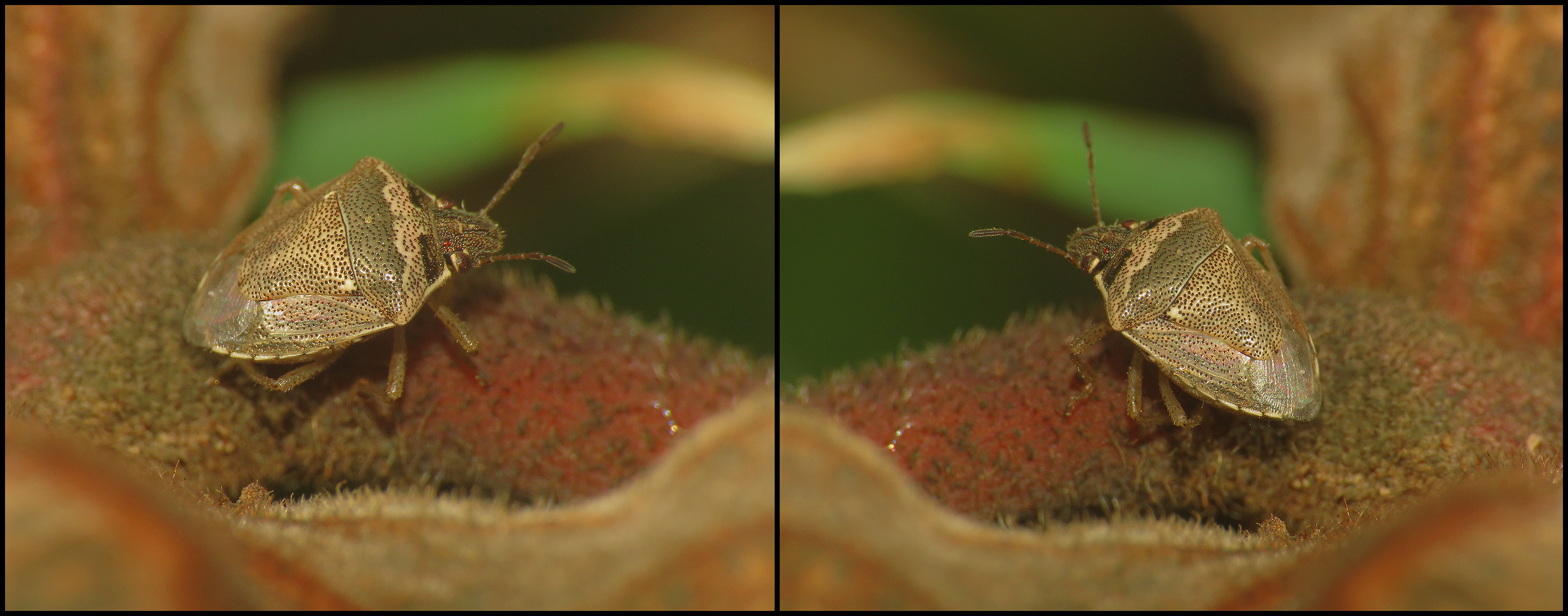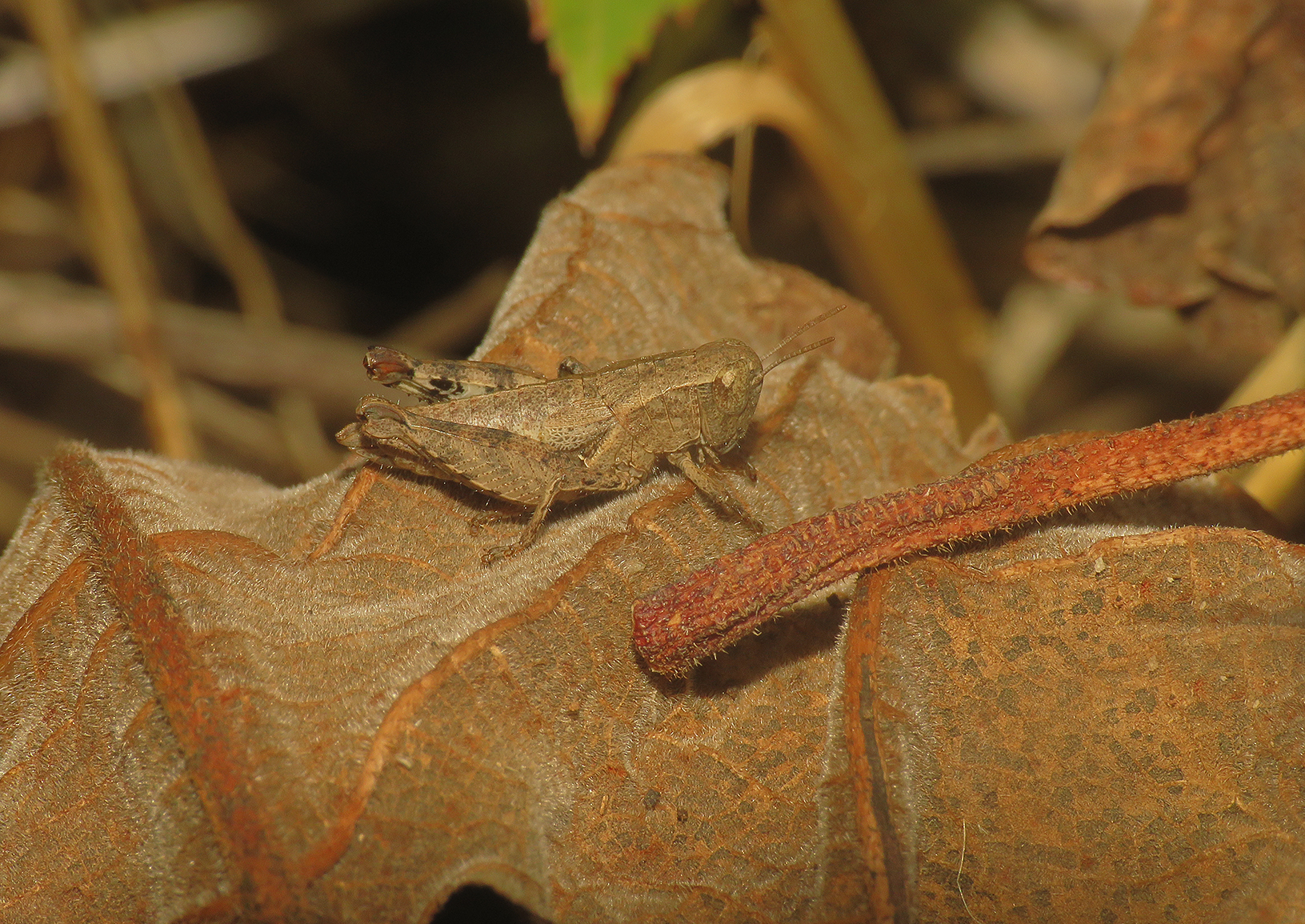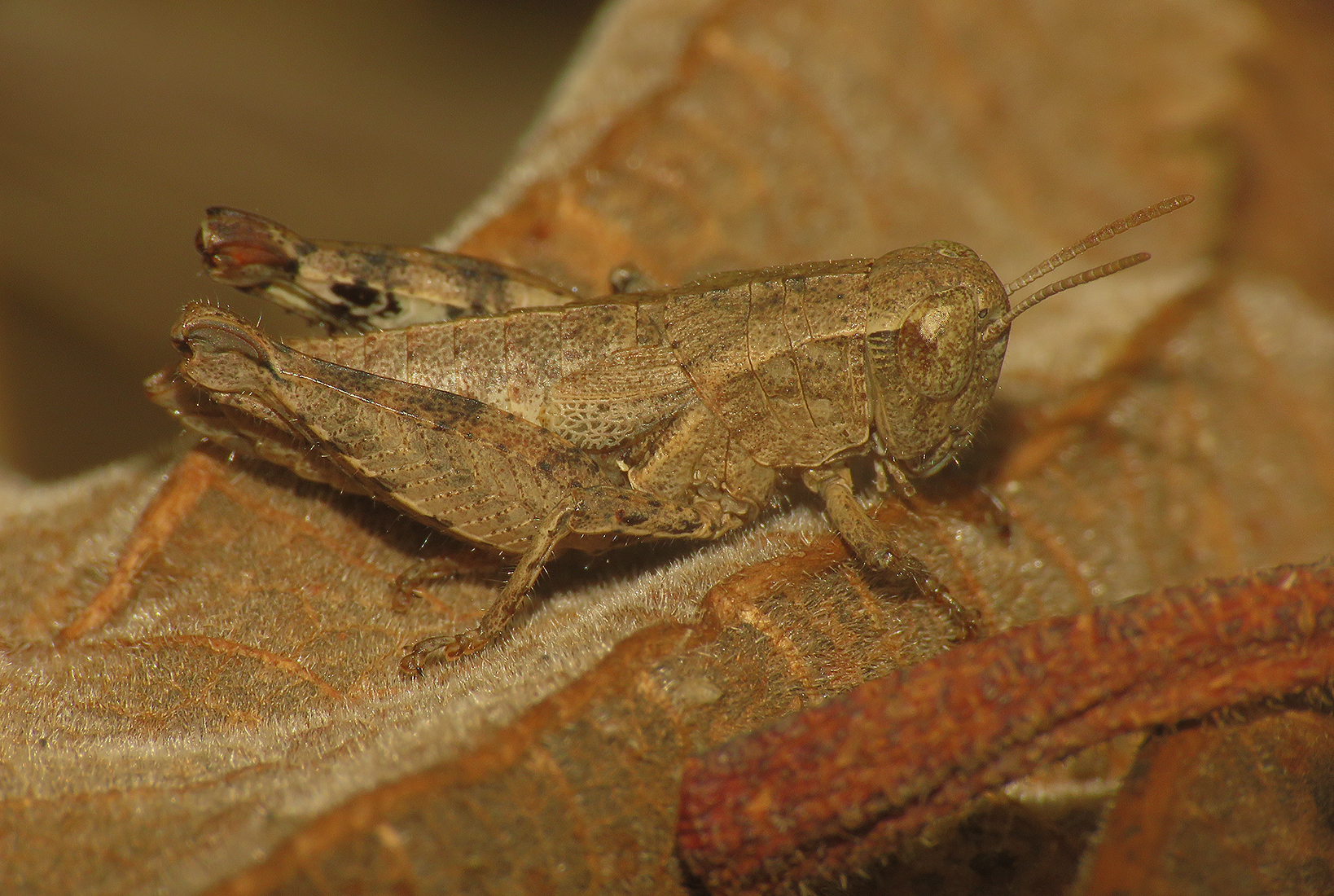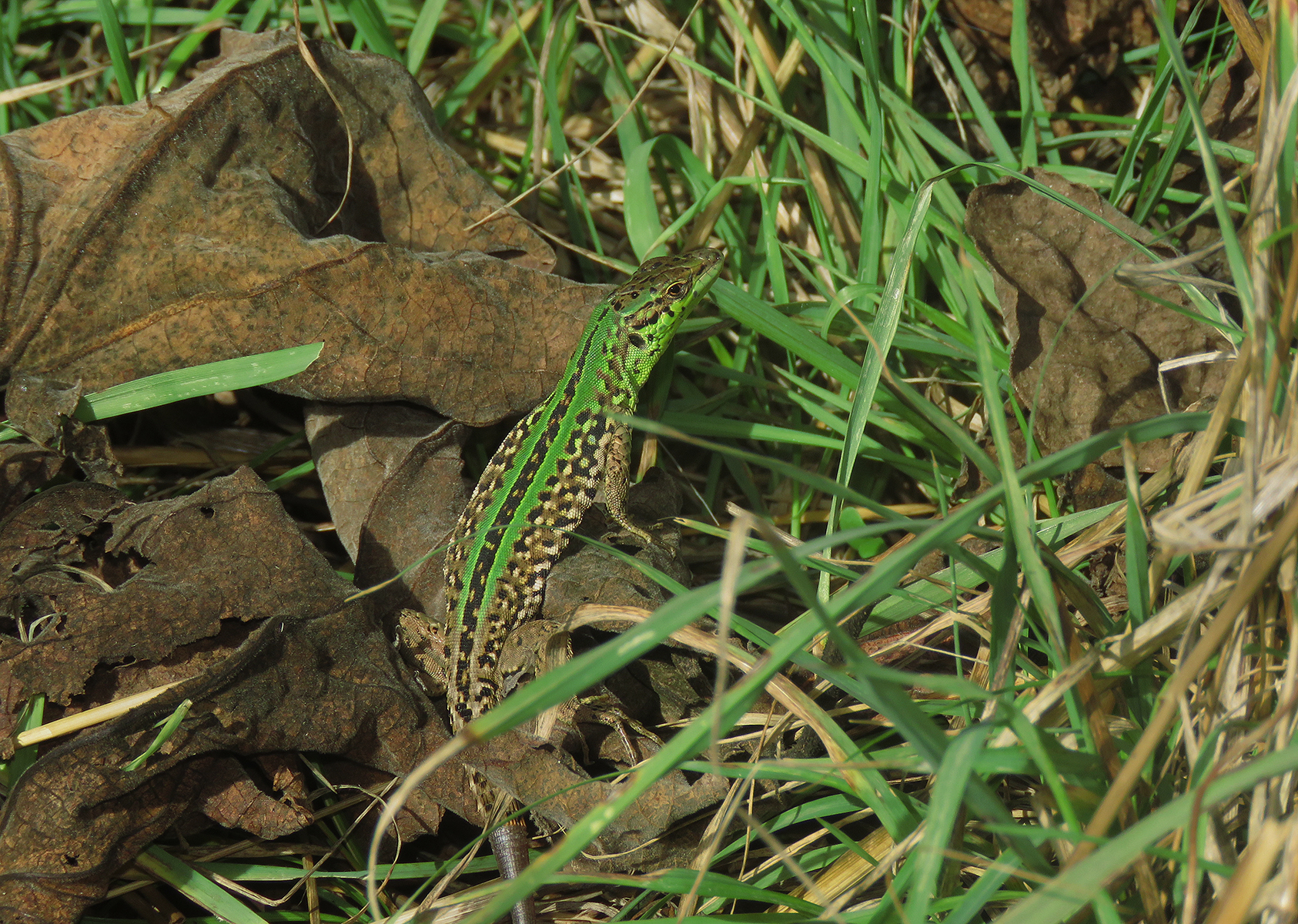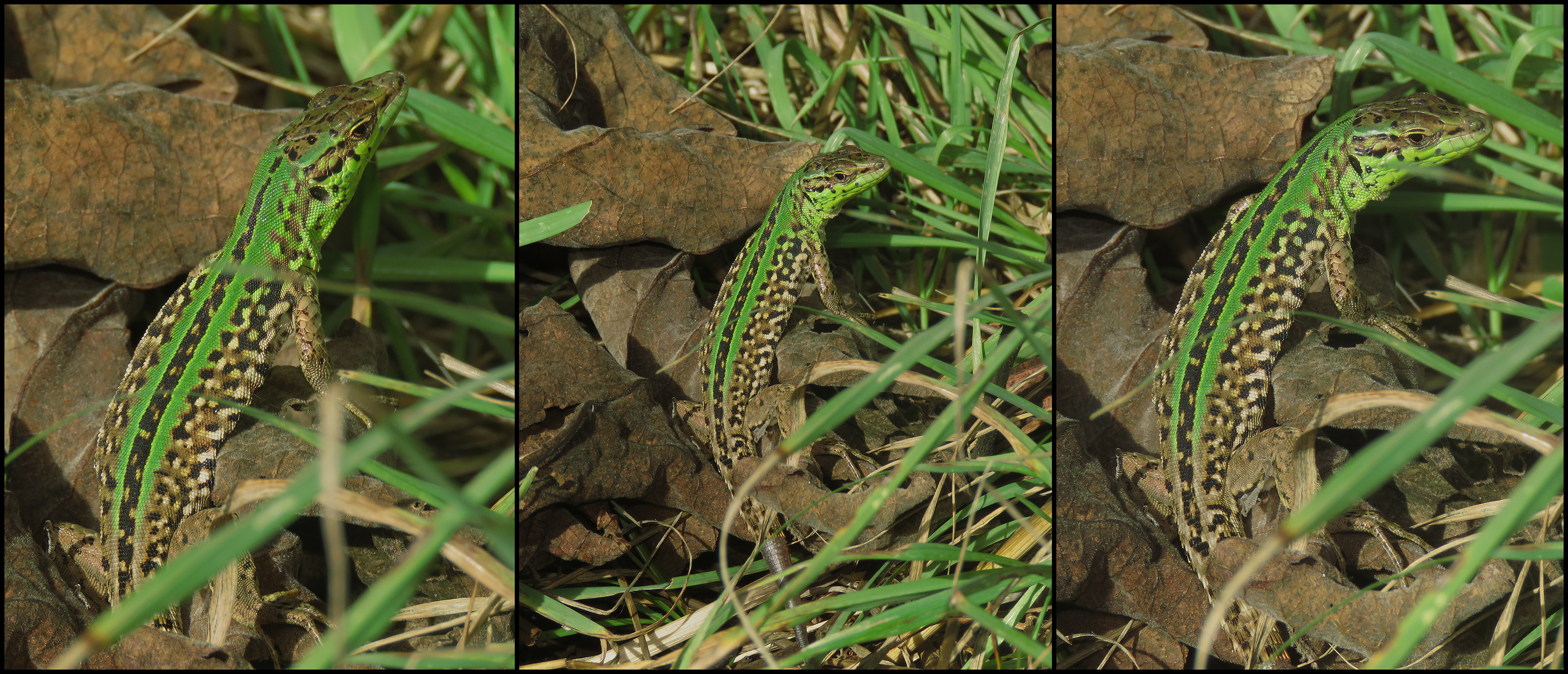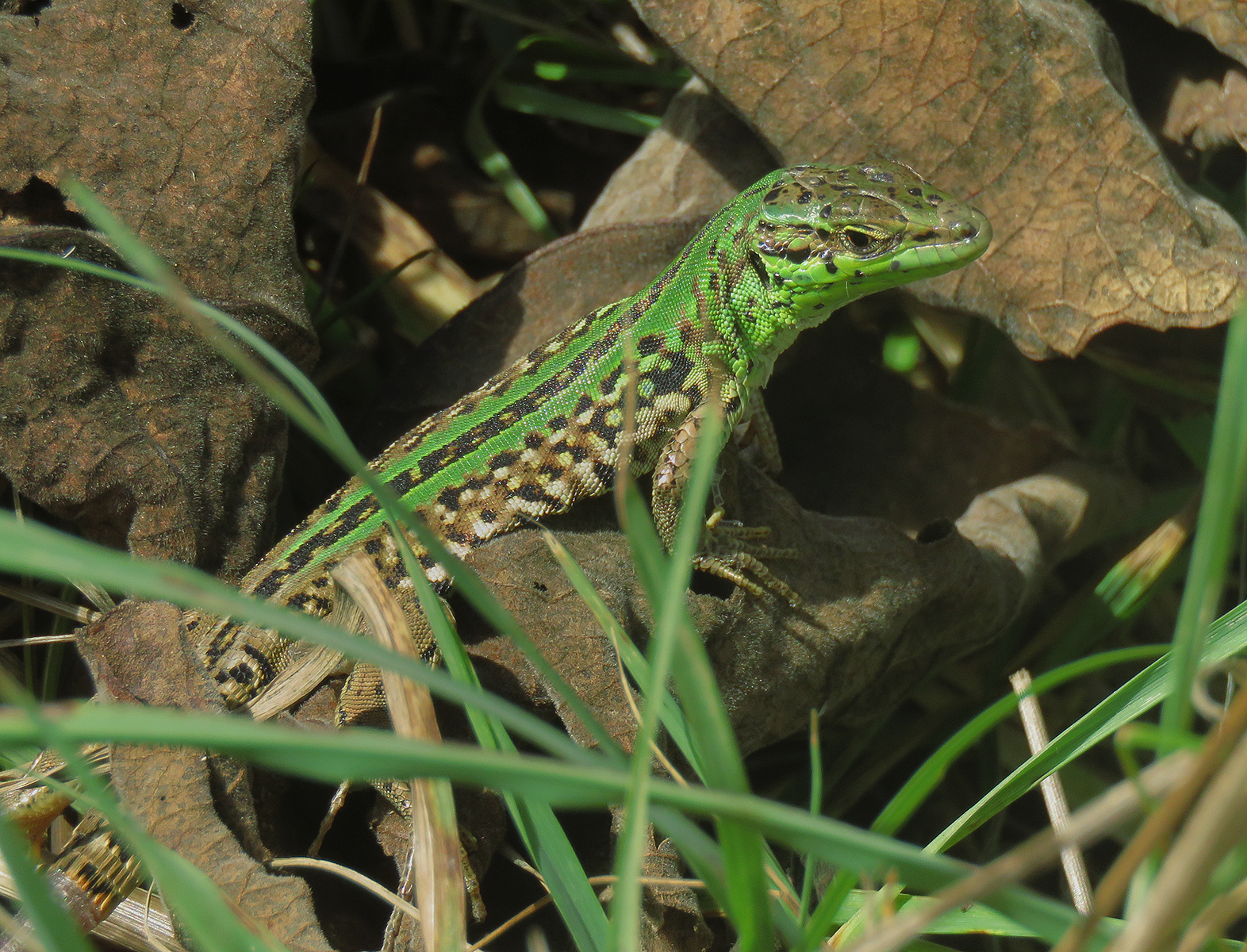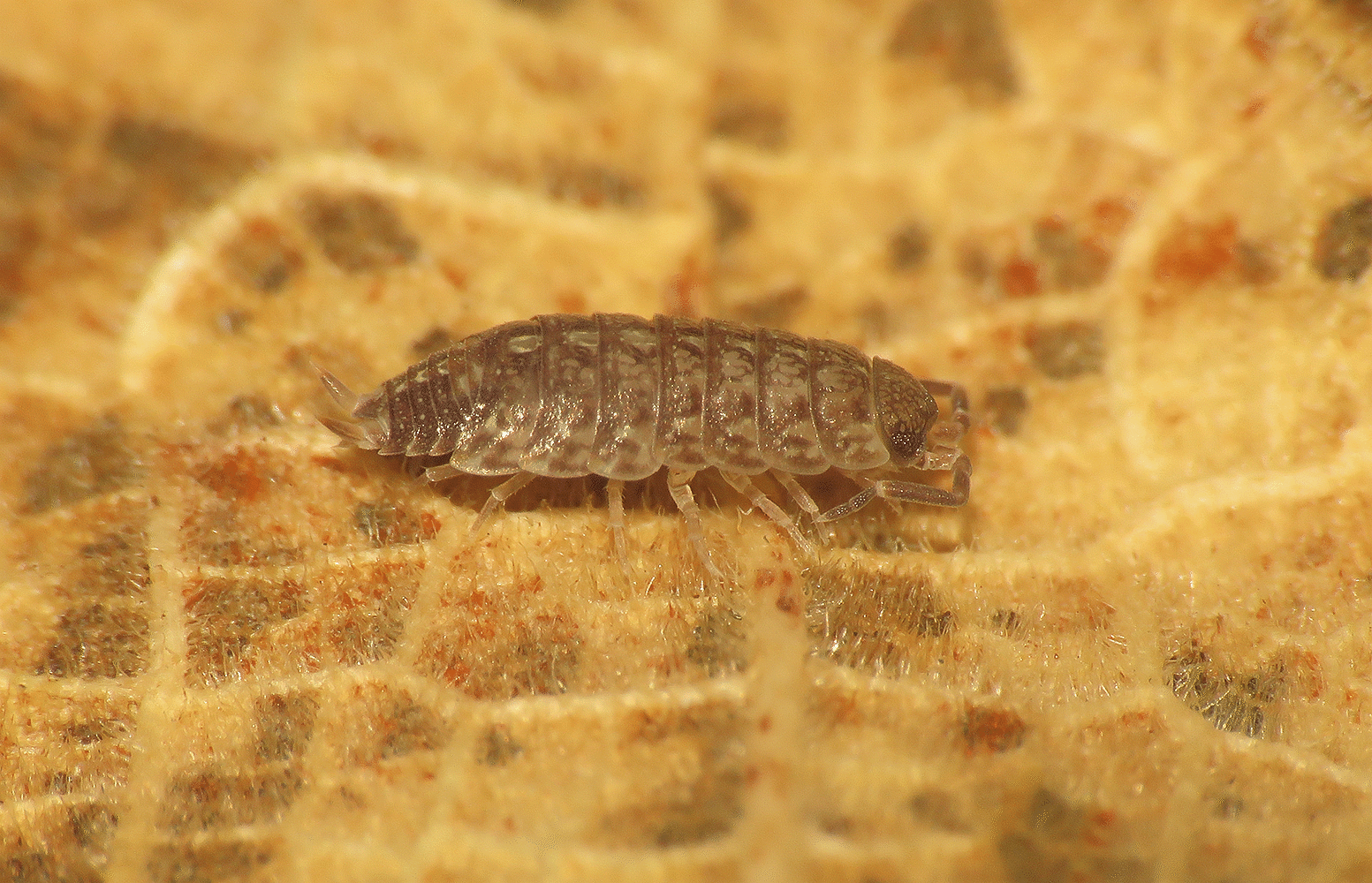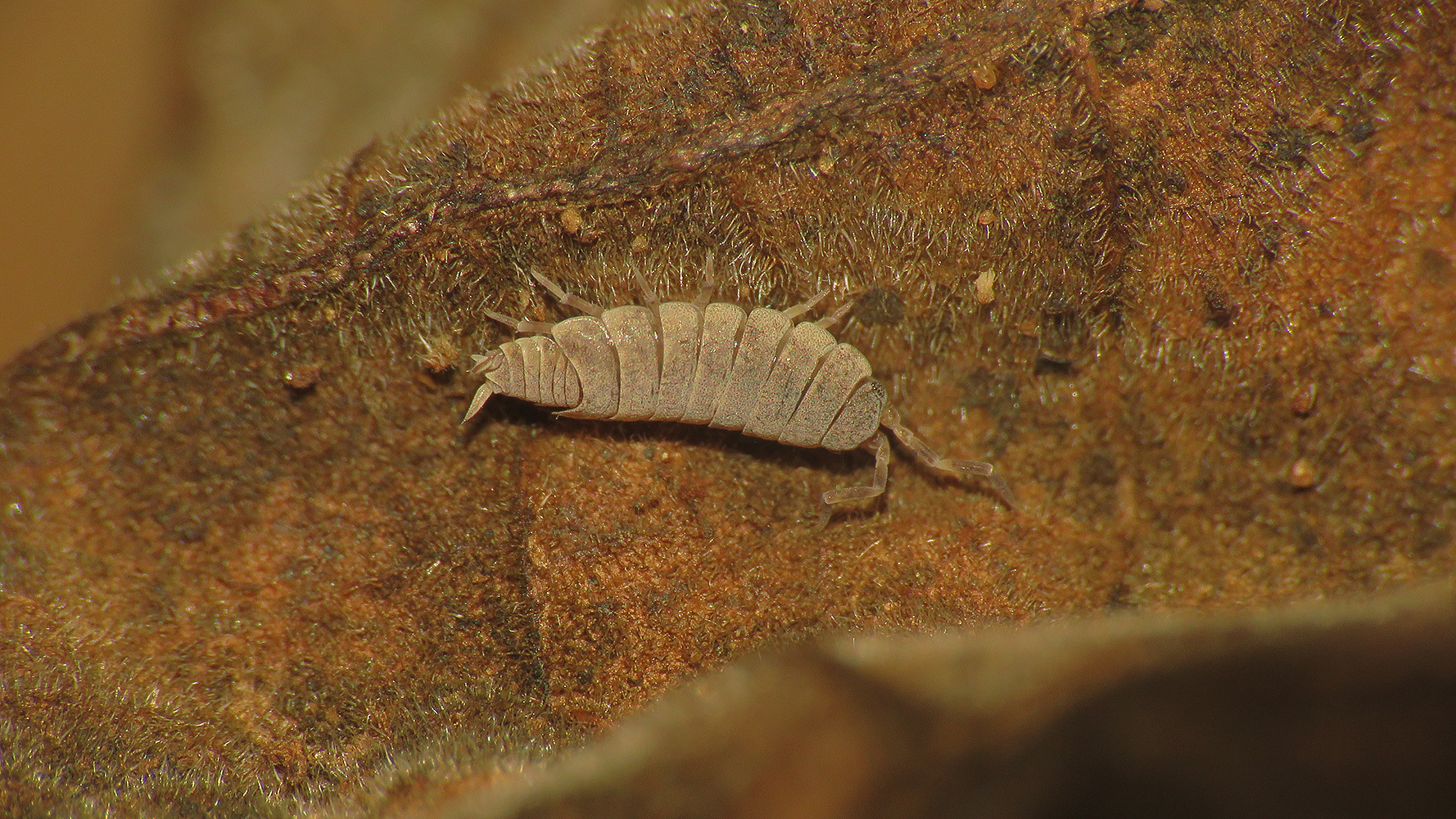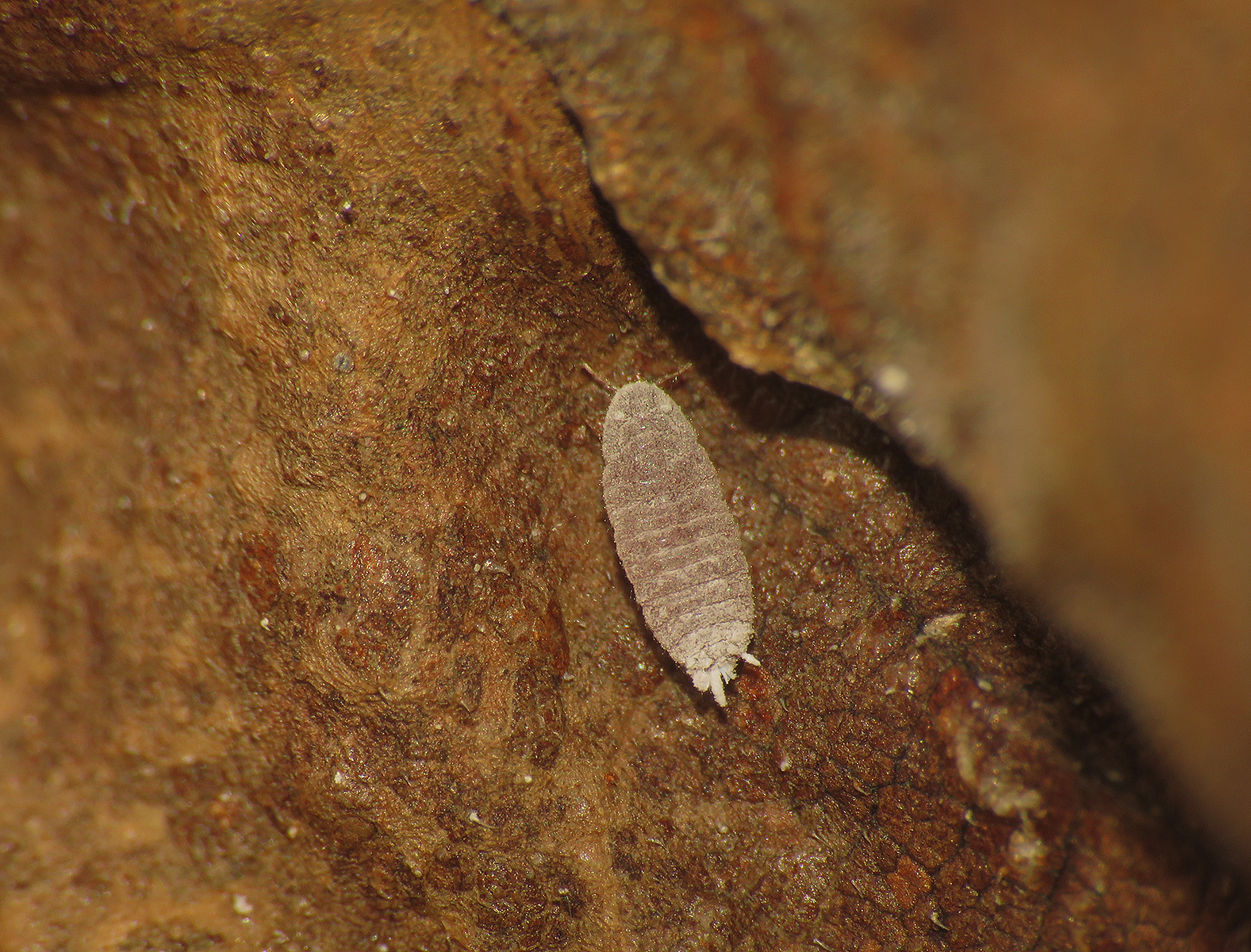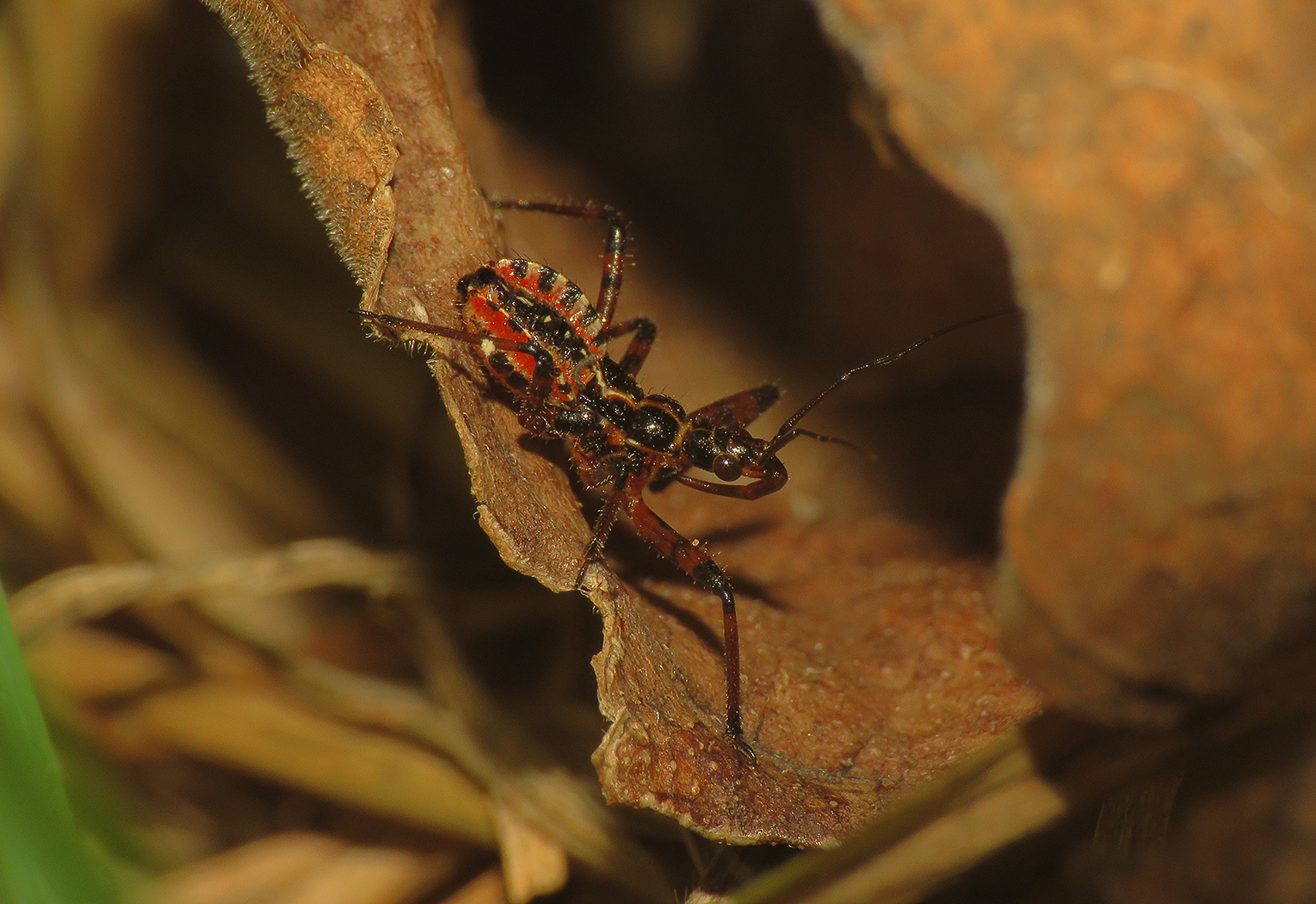In today's post, just like in every other episode of this series, I will show you some insects and arachnids I photographed in Marlera, the coastal area situated a couple of kilometers from the village of Liznjan and about five or six kilometers from where I live, but ...
... but unlike any of the previous episodes, this one is about only one small patch of terrain covered with dead, dry foliage ...
... fallen from the fig tree (Ficus carica).

I was very surprised by the diversity of what I found in the leaf litter. Here you can see the Micrommata ligurina, a spider from the Sparassidae family, resting on the fallen leaves.
This vividly green spider looks very showy on the brown surface but most of the other small arthropods I found in the leaf litter ...

... were well-camouflaged. Which means, mostly brown ...

... like this bug from the Reduviidae family.
The name of the species is Coranus griseus. Just like the spider shown earlier, this is a predator that hunts other insects that have found their autumnal living space in the leaf litter under the fig tree.

This bug belongs to the Pentatomidae family.
The name of the species is Eysarcoris ventralis.

All the Eysarcoris ventralis I found on the 28 of October were hidden under the fallen foliage.
I became aware of their presence only once I started overturning the leaves.
Here you can see one peeking from the shelter provided by the folding of the dry leaf.
Since these bugs were quite numerous, I took quite a few Eysarcoris ventralis portraits that October day.

At one point, while I was photographing yet another Eysarcoris ventralis bug ...
... a jumping spider entered the frame.

It was a small, juvenille Evarcha jucunda spider.
It was just a very short moment, nothing really happened, but the insect and the spider looked very cool next to each other in this series of photographs.

Evarcha jucunda is posing alone in this shot.
A couple of jumps later ...

... the spider was far away. Well, relatively far away.
The tiny arachnid shown in this set of four photographs is a mite.
I'm pretty sure that it belongs to the Trombidiidae family but, becouse of quite a few similar-looking velvet mites around, I can't tell you what species exactly this is. It could be the Trombidium holosericeum. Or some Allothrombium species. Or something else.
The mite shown in this and the previous four photographs was hidden in one of the foldings of the dry, shriveled leaf. A bit later ...

.... I came across another red velvet mite that looked exactly like the previous one so I suppose is the same species.
This one was actively exploring the upper surface of the leaf. In the following photograph ...

... you can take a look at the brown leaves scattered across the fresh green grass. In summer, the leaves are green and attached to the tree while the grass below is dry and yellow or brown.
In this wide, enlargeable shot, you can take a good look at the setting. You can see the wall of an abandoned building, the branches of the fig still decorated with sparse green foliage, and the overall bright atmosphere of a sunny October day in Marlera. In the following photograph ...
... the focus is on the green foliage on the upper branches. All these leaves ...

... will soon end up on the ground like the ones shown in this shot. And now, after a quick break from the macro view ...

... is time to resume the virtual tour through the leaf litter.

In this, the previous, and the following photograph ...

... you can see a leafhopper nymph. In this case, I can't tell you the name of the species. Quite a few leafhoppers look more or less like this before reaching adulthood. The family is Cicadellidae, that's something I'm sure of.
At one point, I saw an earwig nymph running across one of the leaves. I was able to take only one shot before the insect disappeared deeper into the leaf litter, and even that was a bit of a miracle becouse the young earwig was running damn fast. The name of this species is Forficula auricularia.
Do you remember the green spider from the beginning of the post? Well, here you can see another adult female of the same species. A bit of green grass mixed with the brown of the fallen leaves makes the spider much harder to notice.
The following photograph ...

... shows another Micrommata ligurina spider.

This one is well camouflaged on the brown surface. Just like the green spider shown earlier, this is also a female. But it's a juvenile female.

At this stage of their life, the Micrommata ligurina spiders are completely brown.
After photographing the two versions of the Micrommata ligurina female ...
... I noticed an Eysarcoris ventralis resting on the upper surface of the leaf. This bug was calm and quiet in a sunny spot so I was able to take a good portrait by combining the ambient light with the flash of my camera. All the previous photographs that show this species were taken in the shade, which means in low light conditions that led to rougher, less aesthetically pleasing results.
Here you can see another bug of the same species posing on the grass above the fallen leaves. At one point, while I was observing the bug through the macro lens ...

... the green spider shown earlier entered the frame for a second or two. It didn't attack the bug.
Here you can see a Chorthippus biguttulus grasshopper sunbathing on the upper surface of a fallen leaf that isn't completely brown and shriveled. In the following two photographs ...

... another grasshopper of the same kind...
... is posing on the brown leaf.

In this wide shot, you can take another look at the leaf litter. Quite a few of the small arthropods shown in today's post will overwinter hidden in this relatively warm and safe space provided by the life cycles of the fig tree.

Pezotettix giornae is a grasshopper that appears in almost every episode of this series.
This species is very hard to notice on the brown leaves.
A very successful mimicry is always fun to observe and photograph.
Here you can see the Aiolopus strepens grasshopper. The photograph on the left was taken with the little help of my camera's flash. The right one was shot in ambient light.
With many spiders and insects in it, the leaf litter is a good hunting ground for small lizards.
This is the Podarcis siculus, a lizard from the Lacertidae family.
The fallen leaves provide plenty of prey and a good hiding place for these reptiles. I saw three of them on the 28 of October.

I found this small woodlouse only after removing a couple of leaves. They prefer humid shady places on a sunny day like the one shown in this post. The name of the species is Philoscia muscorum. The family is Philosciidae.
This simple GIF was created with two consecutive shots. I made the thing to have some fun after the fairly tedious preparation of many still photographs, and I included it to give a tiny bit of movement to the post.
You can see another small woodlouse in this shot. This is the Porcellionides pruinosus, a species from the Porcellionidae family.
This tiny wingless insect that resembles some kind of woodlouse is a mealybug.
I don't know what species this is but I can confidently tell you that it belongs to the Pseudococcidae family. The genus is probably Vryburgia.
Here you can see another predatory bug from the Reduviidae family.

This is a Rhynocoris rubricus nymph. In the following triptych...
... you can see yet another Micrommata ligurina female. The photograph in the middle was taken in ambient light, the other two were additionally lit with the outburst of artificial light provided by the small, built-in flash of my camera.
The brown spider, shown in the following photograph ...

... is a Tibellus oblongus. Despite its appearance that resembles a juvenile Micrommata ligurina, this species belongs to the Philodromidae family.

Here you can see another Aiolopus strepens grasshopper. Color and markings are pretty variable in this species.
AND THAT'S IT. HOPE YOU ENJOYED THIS FAIRLY LONG MACRO SAFARI AS MUCH AS I HAD FUN EXPLORING THE LEAF LITTER ON THE 28 OF OCTOBER.
WHEN IT COMES TO WRITING THE POST, WELL, THAT WAS MORE WORK THAN FUN. AS ALWAYS HERE ON HIVE, THE PHOTOGRAPHS ARE MY WORK.
The following links will take you to the sites with more information about some of the protagonists of this post. I found some stuff about them there.
https://en.wikipedia.org/wiki/Micrommata_ligurina
https://inaturalist.nz/taxa/327162-Coranus-griseus
https://www.inaturalist.org/taxa/141727-Eysarcoris-ventralis/browse_photos
https://en.wikipedia.org/wiki/Evarcha_jucunda
https://en.wikipedia.org/wiki/Trombidiidae
https://en.wikipedia.org/wiki/Trombidium_holosericeum
https://en.wikipedia.org/wiki/Forficula_auricularia
http://www.pyrgus.de/Chorthippus_biguttulus_en.html
https://en.wikipedia.org/wiki/Pezotettix_giornae
https://en.wikipedia.org/wiki/Aiolopus_strepens
https://en.wikipedia.org/wiki/Italian_wall_lizard
https://en.wikipedia.org/wiki/Philoscia_muscorum
https://bmig.org.uk/species/porcellionides-pruinosus
https://en.wikipedia.org/wiki/Mealybug
https://entnemdept.ufl.edu/creatures/ORN/MEALYBUG/vryburgia_trionymoides.htm
https://en.wikipedia.org/wiki/Rhynocoris_rubricus
https://en.wikipedia.org/wiki/Tibellus_oblongus



